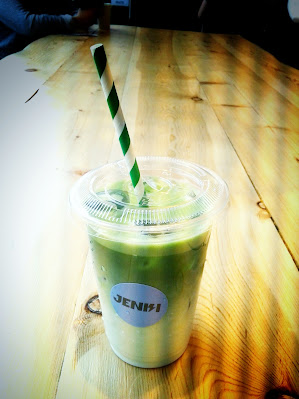Foraging has a trendy edge to it in the UK, where I am currently. It is the act of picking leaves, fruits and fungi from the wild to eat. These are often also ingredients you wouldn't normally find in supermarkets.
Tbh I have a friend in Hokkaido, Japan, who forages while hiking and cooks her finds. And during my rural UK childhood, it was very normal to collect things like wild blackberries from local hedgerows to make jam or a pie at home. It's an old practice worldwide.
In fact there is legislation around UK foraging, and you need permission from the landlowner to do it. Some of this is to do with tresspassing laws, plus there is a long list of wild plants and fungi which have been protected by law since 1981. So get an OK from the farmer, wildlife trust, or whoever else owns the land before you start! (This also applies to digging up wild plants to use in a garden etc.) Most sites do not allow commercial foraging, for obvious reasons of scale and unfair profit.
In the past couple of decades (one of which I was overseas for) organic and natural foods have become much more desirable to Brits. This is due to concerns over pesticides harming both humans and our ecosystems, and the environmental impacts of large-scale agriculture in general. I've mentioned before the complex class systems of the UK. And the popularity of organic foods is seen as a fairly middle-class thing. Not least because they are so much more expensive to buy.
What could (in theory) be more organic than foraged things growing wild? AND (in theory) they're also free! UK celebrity chefs like Hugh Fearnley Whittingstall have also popularised unusual, local, responsibly foraged ingredients at home. So you can see how the trend has grown from just something country people did occasionally to make pie.
The number of foraging Brits also spiked further over the pandemic - as people spent more time outdoors, and in their kitchens.
There are of course, other concerns for foraging besides the law - not least that you need to be a real expert on plants and fungi! Many items look very similar to the untrained eye - but some can be highly poisonous to eat. There are also some ingredients which must be prepared properly for safe eating (even our common potato is incredibly toxic, unless cooked and used in the right way - not that potatoes grow wild here!)
The Pesto
ANYWAY. I got gifted a bunch of wild garlic from our local woodland. They have strict rules on foraging, which is allowed to a certain weight per home individual after permission. There's a £5000 fine if you forage without a permit! One experienced forager had overpicked, and so handed the surplus back to the park. And since I volunteer there sometimes, I was offered some.
I had never clapped eyes on wild garlic before, tbch, but was advised that pesto was an easy and tasty recipe for it. (I had not made pesto before, either).
I improvised, due to affordable ingredients I could find in our local supermarket, and looked up a few pesto recipes to get a vague idea of what to do - the rest was a 'taste as you go' experiment! Here is what I did:
Very carefully washed each garlic leaf separately! I might have been being paranoid here, but was thinking dogs and foxes, and the fact garlic grows on the ground! Laid the leaves out to dry (I have reused the paper towels, of course).
I separated out the buds with stalks for salads.
Ingredients: wild garlic leaves/stalks, crushed walnuts, grated parmesan, olive oil, lemon juice.
Wanged amounts in a blender until I got the texture and taste I wanted. (FYI the leaves break down to a much smaller volume).
The flavour: a cross between garlic and watercress, I think. The pesto is quite subtle, but with a garlic undertone. And ideally would be best married with homemade or fresh pasta to showcase this. Freezes well in individual portions, though try to defrost overnight in the fridge (microwaving will totally wilt the leaf content).
The raw buds in salad are really delicious - slightly creamy flavoured even, but with a mild garlic kick.
Here's the final dish made with cheapo pasta - will try to source a more upmarket carb for the next portion!








